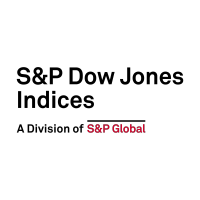Tag Archives: Passive
A Spider Spins a SPIVA Special
Thirty years ago, Bill Clinton was getting ready for his inauguration as the 42nd U.S. president, the S&P 500® closed a little over 430 and the latest edition of Business Week was trumpeting that 1993 would be “The Year of Picking Wisely” in the stock market. Meanwhile, a different kind of security was about to…
- Categories Equities, S&P 500 & DJIA
- Other Tags
Dissecting the Divergent Performance among Latin American Fund Managers
Lessons from the SPIVA Latin America Mid-Year 2022 Scorecard The semiannual S&P Indices Versus Active (SPIVA®) Scorecards1 measure the performance of actively managed funds against their corresponding benchmarks in various markets around the world. According to the latest SPIVA Latin America Mid-Year 2022 Scorecard, the YTD performance among active managers across Latin American countries varied…
- Categories Equities
- Other Tags
Tucking in to the SPIVA Australia Mid-Year 2022 Scorecard
The semiannual S&P Indices Versus Active (SPIVA®) Scorecard1 measures the performance of actively managed funds against their corresponding benchmarks in various markets around the world. The latest Australian edition, the SPIVA Australia Mid-Year 2022 Scorecard, provides a number of interesting insights about the performance of active versus passive across active fund categories. Although the long-term…
- Categories Equities, Fixed Income
-
Other Tags
2022, Active, active management, Active vs. Passive, ASX, Australia, Australian bonds, Australian equities, Benedek Voros, IIS, Index Investment Strategy, Mid-Year 2022, passive investing, REIT, S&P Developed Ex-Australia LargeMidCap, S&P/ASX 200, S&P/ASX 200 A-REIT, S&P/ASX Australian Fixed Interest 0+ Index, S&P/ASX Mid-Small, SPIVA, SPIVA Australia
- Categories
- Equities, Fixed Income
- Other Tags
- 2022, Active, active management, Active vs. Passive, ASX, Australia, Australian bonds, Australian equities, Benedek Voros, IIS, Index Investment Strategy, Mid-Year 2022, passive investing, REIT, S&P Developed Ex-Australia LargeMidCap, S&P/ASX 200, S&P/ASX 200 A-REIT, S&P/ASX Australian Fixed Interest 0+ Index, S&P/ASX Mid-Small, SPIVA, SPIVA Australia
Results from the SPIVA India Year-End 2021 Scorecard
The S&P Indices Versus Active (SPIVA®) Scorecard,1 published semiannually, measures the performance of actively managed funds against their corresponding benchmarks. The latest SPIVA India report provides a number of interesting insights about the performance of active versus passive across active fund categories. 1. Long-Term Outperformance of Active Funds Was Difficult Indian bond funds had a…
- Categories India
- Other Tags
Finding a Factor Fit
How can three decades of factor index performance history help investors make more informed decisions and measure the effectiveness of active managers? Join S&P DJI’s Craig Lazzara and Anu Ganti for a closer look at factor performance across a range of market environments. Learn more: https://www.spglobal.com/spdji/en/research/article/factor-indices-a-simple-compendium/
- Categories Factors
-
Other Tags
2022, Active, Active vs. Passive, alternate beta, alternative beta, Anu Ganti, beta, Core Factor PM, Core Factors, Craig Lazzara, dividend growth, Factor, high beta, Index Investment Strategy, low volatility, momentum, quality, risk management, Risk Premia, S&P 500 Factors, S&P Dow Jones Indices, SPIVA, U.S. Equities
- Categories
- Factors
- Other Tags
- 2022, Active, Active vs. Passive, alternate beta, alternative beta, Anu Ganti, beta, Core Factor PM, Core Factors, Craig Lazzara, dividend growth, Factor, high beta, Index Investment Strategy, low volatility, momentum, quality, risk management, Risk Premia, S&P 500 Factors, S&P Dow Jones Indices, SPIVA, U.S. Equities
Paint by Numbers: SPIVA Latin America Year-End 2021
The S&P Indices Versus Active (SPIVA®) Scorecard1 provides a rich tapestry of data and insights on the active versus passive debate by comparing the performance of actively managed funds to their corresponding passive benchmarks. The SPIVA Latin America Scorecard is one of several regionally focused reports and covers the performance of active funds in Brazil,…
- Categories Equities, Fixed Income
- Other Tags
- Categories
- Equities, Fixed Income
- Other Tags
No Time to Thrive
S&P DJI has just released the final regional edition of our S&P Index Versus Active (SPIVA®) Mid-Year 2021 Scorecards. The semiannual reports cover the performance of actively managed funds in the U.S., Canada, Latin America, Europe, South Africa, India, Japan, Australia, and our newest regional addition, the Middle East and North Africa (MENA). SPIVA Scorecards…
- Categories Equities, Fixed Income
-
Other Tags
2021, Active, active management, Active vs. Passive, ASX, Australia, Brazil, BSE, canada, Canada FA, Chile, Europe, Index Investment Strategy, India, Japan, Latin America, Mexico, S&P 500, S&P Brazil BMI, S&P BSE 100, S&P Chile BMI, S&P Europe 350, S&P Pan Arab Composite, S&P TOPIX 150, S&P/ASX 200, S&P/BMV IRT, S&P/TSX Composite, Sherifa Issifu, South Africa, SPIVA, SPIVA Around the World, SPIVA Australia, SPIVA Canada, SPIVA Europe, spiva india, SPIVA Japan, SPIVA Latin America, SPIVA Mena, SPIVA South Africa, SPIVA U.S., TOPIX, TSX, US FA
- Categories
- Equities, Fixed Income
- Other Tags
- 2021, Active, active management, Active vs. Passive, ASX, Australia, Brazil, BSE, canada, Canada FA, Chile, Europe, Index Investment Strategy, India, Japan, Latin America, Mexico, S&P 500, S&P Brazil BMI, S&P BSE 100, S&P Chile BMI, S&P Europe 350, S&P Pan Arab Composite, S&P TOPIX 150, S&P/ASX 200, S&P/BMV IRT, S&P/TSX Composite, Sherifa Issifu, South Africa, SPIVA, SPIVA Around the World, SPIVA Australia, SPIVA Canada, SPIVA Europe, spiva india, SPIVA Japan, SPIVA Latin America, SPIVA Mena, SPIVA South Africa, SPIVA U.S., TOPIX, TSX, US FA
Headwinds on the Active Horizon
Active managers’ performance was disappointing in 2020, despite the market’s heightened volatility. As the market continues to march upward in 2021, it’s natural to wonder if current conditions are favorable for stock pickers. We expect active managers’ difficulties to persist. We can think of volatility in terms of its components: dispersion and correlation. Active managers…
- Categories S&P 500 & DJIA
- Other Tags
SPIVA Latin America Year-End 2020 Scorecard: Active Managers Missed an Opportunity
The recently published SPIVA® Latin America Year-End 2020 Scorecard shows that the volatile environment of 2020, though potentially favorable for high-conviction active managers, did not necessarily translate into success for active managers. SPIVA scorecards measure the performance of active funds against an appropriate benchmark. For Latin America, S&P Dow Jones Indices began publishing the scorecard…
- Categories Equities, Fixed Income
- Other Tags
- Categories
- Equities, Fixed Income
- Other Tags
Risk-Adjusted SPIVA Year-End 2020 Scorecard: No Evidence to Support Superior Risk Management Skills of Active Managers
Modern Portfolio Theory tells us that higher returns tend to be associated with higher risk. Active managers tend to boast about their risk management skills and claim that they can generate higher returns than passive funds on a risk-adjusted basis. The Risk-Adjusted SPIVA® Scorecard assesses the risk-adjusted returns of actively managed funds against their benchmarks…
- Categories Equities
- Other Tags















































